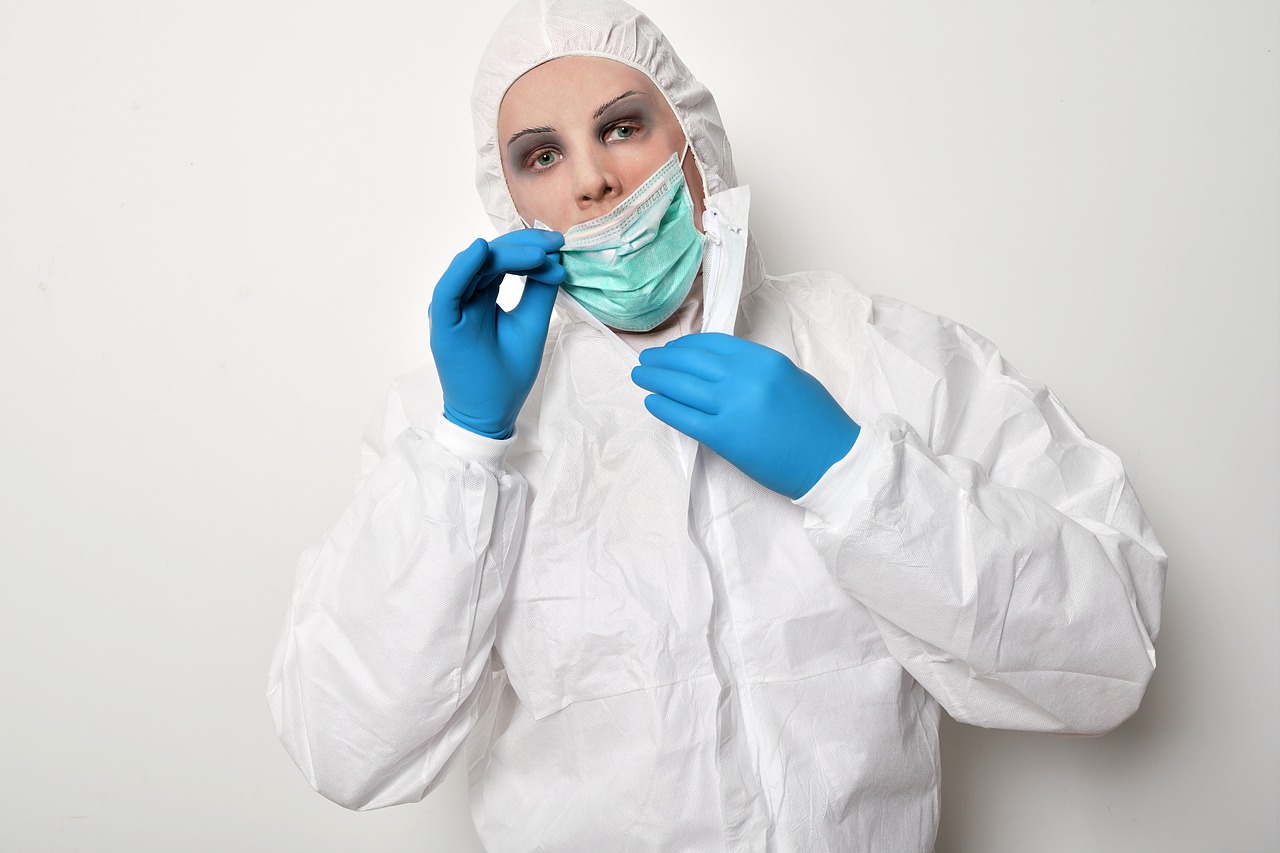
What Is The Definition Of A Disability Aid Or Gadget
Aids in the home and at work for the elderly and people with mental and physical disabilities refers to tools, technologies, adaptations, and accommodations designed to facilitate daily living activities, promote independence, and ensure safety both within the home environment and in the workplace. These aids can range from simple assistive devices to more complex modifications, all aimed at addressing specific needs and challenges. Here are examples of aids for both home and work settings:
Here are some helpful disability aids that can assist with maneuvering both at home and in the workplace:
- Household Aids and Gadgets:
- These devices are designed to make everyday tasks easier for people with disabilities. Some examples include:
- Plug Pullers: For those with limited hand strength or arthritis, removing plugs from sockets can be challenging. Plug pullers provide a better grip and make this task more manageable.
- Reachers and Grabbers: These tools help you reach items on high shelves or pick up objects from the floor without bending down.
- Jar Openers: Designed to open tight lids on jars and bottles.
- Tap Turners: Assist in turning taps on and off, especially for individuals with limited hand dexterity.
- Key Turners: Make it easier to turn keys in locks.
- Sock Aids: Help put on socks without bending over.
- Button Hooks: Aid in fastening buttons.
- Adaptive Cutlery: Forks, knives, and spoons with ergonomic handles for better grip.
- Non-Slip Mats: Prevent slips and falls in the kitchen or bathroom.
- Raised Toilet Seats: Assist with sitting down and standing up.
- Stair Rails and Handrails: Improve stability when navigating stairs.
- Bed Rails: Provide support when getting in and out of bed.
- Shower Chairs and Stools: Allow safe showering while seated.
- Walking Sticks and Canes: Aid balance and mobility.
- Wheelchair Ramps: Essential for wheelchair users.
- Adjustable Beds: Improve comfort and accessibility.
- Chair Lifts and Hoists: Assist with transferring from a sitting to a standing position.
- Sanitary Devices: Such as raised toilet seats and commodes.
- Remember that some of these products may qualify for VAT relief if you meet certain criteria. Check with the relevant authorities or suppliers for details
- These devices are designed to make everyday tasks easier for people with disabilities. Some examples include:
- Workplace Aids:
- At work, consider the following:
- Ergonomic Office Chairs: Support good posture and reduce strain.
- Height-Adjustable Desks: Allow you to switch between sitting and standing positions.
- Keyboard and Mouse Alternatives: Trackballs, touchpads, or speech recognition software.
- Document Holders: Keep papers at eye level to reduce neck strain.
- Footrests: Provide comfort and support under your desk.
- Anti-Fatigue Mats: Ideal for standing workstations.
- Wrist Supports: For computer users to prevent repetitive strain injuries.
- Task Lighting: Ensure proper illumination for reading and working.
- Accessible Restrooms: Make sure your workplace has accessible facilities.
- Accessible Pathways: Clear pathways for wheelchair users.
- Assistive Technology: Screen readers, magnifiers, and voice-controlled devices.
- Training and Awareness: Educate colleagues about disability awareness and etiquette.
- At work, consider the following:
Remember that individual needs vary, so it’s essential to assess your specific requirements and consult with professionals to find the most suitable aids for you.
Aids in the Home:
- Grab Bars and Handrails: Installed in bathrooms, hallways, and other areas to assist individuals with balance and mobility, reducing the risk of falls.
- Lift Chairs: Motorized chairs that assist individuals in standing up or sitting down are particularly helpful for those with mobility issues or weakness.
- Adjustable Beds: Beds that can be electronically adjusted to different positions, providing comfort and support for individuals with mobility limitations, respiratory issues, or chronic pain.
- Stairlifts: Motorized chairs or platforms that transport individuals up and down stairs, enabling those with mobility impairments to access different levels of the home safely.
- Smart Home Technology: Devices such as voice-activated assistants, smart thermostats, and automated lighting systems can enhance accessibility and convenience for individuals with physical disabilities or limited mobility.
- Personal Emergency Response Systems (PERS): Wearable or wall-mounted systems equipped with buttons to summon help in case of emergencies, providing peace of mind for both individuals and their caregivers.
- Adaptive Kitchen Tools: Specialized utensils, appliances, and accessories designed to assist individuals with cooking, eating, and food preparation tasks, accommodating various physical disabilities or limitations.
Aids at Work:
- Accessible Workstations: Adjustable desks, ergonomic chairs, and computer accessories (e.g., keyboard trays, mouse alternatives) designed to accommodate individuals with physical disabilities or ergonomic needs.
- Assistive Technology: Software applications, screen readers, speech recognition software, and other assistive technologies that enable individuals with visual impairments or learning disabilities to access and use computers effectively.
- Modified Work Environments: Workplace modifications such as ramps, elevators, accessible restrooms, and designated parking spaces to ensure equal access and inclusion for employees with mobility impairments.
- Job Coaching and Vocational Rehabilitation: Programs and services that provide training, support, and accommodations to help individuals with disabilities acquire and maintain employment, including job coaching, skills development, and workplace accommodations.
- Flexible Work Arrangements: Telecommuting options, flexible scheduling, and remote work opportunities allow individuals with disabilities or health conditions to balance work responsibilities with their unique needs and challenges.
- Assistive Listening Devices: Hearing aids, captioned telephones, and other devices that improve communication and accessibility for individuals with hearing impairments in the workplace.
- Visual Aids and Signage: Clear signage, Braille labels, and visual aids (e.g., magnifiers, high-contrast materials) that enhance accessibility and navigation for individuals with visual impairments.
- Knee pads and stools: Can provide comfort and support for individuals with multiple sclerosis (MS) during tasks that require prolonged standing or kneeling.
These aids in the home and at work play a crucial role in promoting independence, safety, and inclusion for elderly individuals and those with mental and physical disabilities, enabling them to lead fulfilling lives and participate fully in their communities.
Obsessive Compulsive Disorder (OCD) Assistive Aids
For legal purposes related to Obsessive-Compulsive Disorder (OCD) and Personal Independence Payment (PIP), aids are typically considered as any tools, equipment, or accommodations that assist individuals in managing their symptoms and carrying out daily activities. These aids can vary depending on the specific needs of the individual and the nature of their OCD symptoms.
For individuals with Obsessive-Compulsive Disorder (OCD) who experience obsessions and compulsions related to germ contamination, disinfectant may indeed be considered as an aid or coping mechanism to alleviate anxiety and manage symptoms. However, it’s important to recognize that the use of disinfectants in OCD management can be complex and may require professional guidance.
Disinfectants are substances designed to kill or deactivate microorganisms such as bacteria, viruses, and fungi on surfaces. For individuals with OCD who are preoccupied with cleanliness and fear of contamination, using disinfectants may provide a sense of control and temporary relief from distressing thoughts and compulsions.
However, excessive or ritualized use of disinfectants can potentially exacerbate OCD symptoms and contribute to a cycle of compulsive behavior. This behavior may involve repetitive cleaning rituals, spending excessive time and energy on cleaning tasks, and experiencing heightened anxiety if cleaning standards are not met.
In the context of OCD treatment, disinfectant use should be approached cautiously and integrated into a comprehensive treatment plan that includes cognitive-behavioral therapy (CBT), exposure and response prevention (ERP), and possibly medication under the guidance of a mental health professional. The goal of treatment is to help individuals gradually confront their fears, reduce reliance on compulsive behaviors, and develop healthier coping strategies to manage anxiety and intrusive thoughts related to contamination fears.
It’s also important for individuals with OCD to work with their healthcare providers to establish a balanced approach to hygiene practices, ensuring that cleaning behaviors are appropriate and not reinforcing obsessive-compulsive patterns. In some cases, reducing reliance on disinfectants and gradually exposing oneself to feared stimuli without engaging in compulsive cleaning behaviors may be part of the therapeutic process.
Ultimately, while disinfectants may provide temporary relief for some individuals with OCD, they are not a standalone solution for managing the disorder. Professional guidance and evidence-based treatment approaches are essential for long-term symptom management and improving quality of life.
Personal Independence Payment (PIP) assessments, an “aid or appliance” refers to any device that improves, provides, or replaces impaired physical or mental function. This includes items like prostheses. When assessing a claimant, health professionals consider various factors, including the claimant’s level of ability, whether they use aids or appliances, and whether they require assistance from another person or an assistance dog1.
For individuals with Obsessive Compulsive Disorder (OCD) related to germ contamination, here are some examples of aids that may be relevant during PIP assessments:
- Handwashing aids: Devices that facilitate hand hygiene, such as automatic soap dispensers or specialized handwashing tools.
- Cleaning aids: Tools that assist with cleaning surfaces or objects, reducing the need for direct contact.
- Personal protective equipment (PPE): Items like gloves or masks that help prevent contamination.
- Organizational aids: Systems or tools that help individuals manage their environment to minimize germ exposure.
- Prompting devices: Devices that remind the individual to perform specific tasks related to hygiene or contamination prevention.
Here are some examples of aids that may be relevant:
- Latex Gloves: These can be used as a protective measure for individuals with contamination-related OCD to reduce anxiety and facilitate tasks such as cleaning or handling objects.
- Hand Sanitizer: Hand sanitizer can serve as a portable means of disinfection, particularly for individuals with contamination obsessions and compulsions.
- Notebooks or Journals: Writing down thoughts, feelings, and compulsions can help individuals with OCD track patterns, identify triggers, and work through cognitive-behavioral therapy exercises.
- Medication Reminder Apps: Smartphone apps or pill organizers can assist individuals in adhering to their medication regimen, which is often a crucial aspect of managing OCD symptoms.
- Organizational Tools: This may include labeled storage containers, color-coded systems, or digital organizers to help individuals with OCD maintain order and structure in their environment.
- Noise-Canceling Headphones: These can provide relief for individuals with sensory sensitivities or intrusive thoughts by reducing environmental stimuli and promoting a sense of calm.
- Therapy Tools: Tools used in therapy, such as exposure hierarchy worksheets, relaxation exercises, or mindfulness apps, can aid individuals in implementing therapeutic techniques outside of clinical sessions.
- Comfort Items: Items such as stress balls, weighted blankets, or fidget toys can offer sensory relief and emotional comfort for individuals experiencing heightened anxiety or distress.
- Time Management Tools: Timers, alarms, or scheduling apps can assist individuals in structuring their time and staying on track with tasks, reducing feelings of overwhelm and disorganization.
- Support Animals: Service animals or emotional support animals trained to provide comfort and assistance can offer companionship and emotional support to individuals with OCD, particularly during times of heightened stress or anxiety.

It’s important to note that the appropriateness and necessity of specific aids may vary based on individual circumstances and should be determined in consultation with healthcare professionals and legal advisors familiar with the relevant regulations and guidelines.
Conclusion
While it’s crucial to note that aids for OCD, including the use of disinfectants and latex gloves, should be approached with caution and under the guidance of a mental health professional, some literature discusses their role in managing OCD symptoms related to contamination fears.
Here’s a citation that discusses this:
Citation: Title: “Exposure and Response Prevention for OCD: Therapist Guide”
Authors: Edna B. Foa, Elna Yadin, Tracey K. Lichner
Publisher: Oxford University Press
Publication Date: March 2012
ISBN-13: 978-0195308501
In this therapist guide for treating OCD using Exposure and Response Prevention (ERP), which is a form of cognitive-behavioral therapy (CBT) specifically tailored for OCD, the authors discuss the use of aids such as latex gloves and disinfectants as part of exposure exercises. Exposure exercises involve gradually confronting feared stimuli (e.g., germs, contaminants) without engaging in compulsive behaviors (e.g., excessive cleaning) to reduce anxiety and compulsive responses over time.
While this citation doesn’t explicitly classify latex gloves and disinfectants as aids, it provides guidance on their use within the context of evidence-based treatment for OCD. Additionally, it emphasizes the importance of using these aids as part of a structured treatment plan under the guidance of a trained therapist.
For further information and specific guidance on the role of aids in OCD treatment, consulting resources such as academic journals, treatment manuals, or guidelines from reputable mental health organizations may provide additional insight.
Further Reading:
- Apply for equipment for your home if you’re disabled – GOV.UK (www.gov.uk)
- How to get support at home and work if you have a disability – Rest Less
- New advice hub to help disabled people understand their rights at work – GOV.UK (www.gov.uk)
- Specialist help and support – Supporting disabled people at work – Acas
#elderly #elderlyaids #gadgets #aids #ocd #pip #dwp #latexgloves #disinfectant #ppe #disabledentrpreneur #disabilities #disabilityaids #cbt #ert
ADVERTISEMENTS

Renata The Owner & Editor of DisabledEntrepreneur.uk and DisabilityUK.co.uk Online Journals, suffers From OCD, Cerebellar Atrophy & Rheumatoid Arthritis. She is an Entrepreneur & Published Author, she writes content on a range of topics, including politics, current affairs, health and business. She is an advocate for Mental Health, Human Rights & Disability Discrimination.
Whilst her disabilities can be challenging she has adapted her life around her health and documents her journey online.
Disabled Entrepreneur - Disability UK Online Journal Offers Digital Marketing, Content Writing, Website Creation, SEO, and Domain Brokering. Disabled Entrepreneur - Disability UK is an open platform that invites contributors to write articles and serves as a dynamic marketplace where a diverse range of talents and offerings can converge. This platform acts as a collaborative space where individuals or businesses can share their expertise, creativity, and products with a broader audience.










